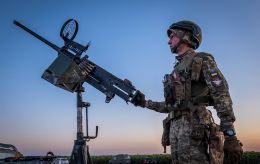Carpathians made easy: A first-timer's guide to Ukraine's wild mountains
 What tourists should know about the Carpathians (photo: Unsplash)
What tourists should know about the Carpathians (photo: Unsplash)
Going on your first trip to the Carpathians? It's a great choice! However, to ensure your journey brings only positive experiences, there are a few important things you should know. Here are the most essential tips for beginners: clothing, food, water, a first aid kit, weather, and hiking routes.
What clothing to choose for the Carpathians
Hiking in the mountains requires well-thought-out gear. The best option is sports or trekking clothing that doesn't restrict movement and doesn't cause chafing. It's important to have a comfortable backpack that fits well on your back and holds everything you need.
Remember warm clothes—even in summer, it can be cold in the mountains. Be sure to take thermal underwear, a fleece jacket, and a windproof and waterproof jacket.
Sturdy sneakers or trekking boots should securely support the ankle and have a good grip.
What food to bring
Your hiking diet should be filling but lightweight. Ideal choices include canned or dried meat, instant grains (like buckwheat or oats), dried fruits, nuts, and energy bars. Meals that just need boiling water—like dehydrated soups, noodles, or porridges—are perfect.
Food is prepared either on a campfire or with gas burners. If you're traveling in a group, cooking over a fire is convenient—you can prepare several dishes simultaneously. A gas burner is useful in bad weather or places where fires are not allowed.
What the weather is usually like in the Carpathians
Mountain weather is unpredictable—sunshine can turn into heavy rain in minutes. Always check the forecast before your hike. In summer, August is the best month for travel, as the weather is usually the most stable.
If you want to see vibrant autumn colors, go in September or October. But remember, the days are shorter and the nights colder. Winter hikes require special gear and experience.
 Rain several times a day is a common occurrence in the Carpathians (photo: Pixabay.com)
Rain several times a day is a common occurrence in the Carpathians (photo: Pixabay.com)
How much water to take
The most important rule is to always have water with you. The recommended amount is 1.5–2 liters per person per day. Plan your stops so that you have access to natural springs—most routes pass by them.
Boiling water in the mountains is not always convenient, especially without firewood or in bad weather. That's why a gas burner with canisters is a very useful item. And don't forget a lighter or matches!
First aid kit
A first aid kit is a must in the mountains. Pack painkillers, anti-inflammatory medicine, bandages, plasters, wound disinfectants, and cold remedies. Don't forget sunscreen and insect repellent for mosquitoes and ticks.
Mosquitoes aren't common in the Carpathians, but ticks are quite widespread. Also bring hygiene supplies: wet wipes, a small shower gel, a toothbrush, and toothpaste. A sleeping mat and rain poncho will be handy for overnight stays in nature.
 Mount Pip Ivan (photo: Wikipedia)
Mount Pip Ivan (photo: Wikipedia)
Best beginner-friendly routes
Mount Khomiak (1542 m)
This is an ideal first climb choice. The route goes through coniferous forests and mountain meadows, becoming rocky and steep closer to the top. The landscapes are stunning, and the trail is safe.
Mount Hoverla (2061 m)
The highest peak in Ukraine, with a starting point at the "Zarosliak" tourist base. The trail is marked but very popular—expect crowds. The climb takes a few hours, and the views are breathtaking.
Skole Beskids (up to 1300 m)
It is great for beginners and offers various routes. Here, you'll find waterfalls, cliffs, forests, and the ancient Tustan fortress. The starting point is the town of Skole, easily accessible by train or highway.
Mount Parashka (1268 m)
One of the most popular routes in the Beskids, the trail is not too difficult but long, up to 20 km round trip, and suitable for physically fit hikers.
Mount Lopata (1211 m)
An accessible but slightly longer hike, up to 25 km. You'll see forests, meadows, and beautiful landscapes along the way. It can be combined with visits to Kamianka Waterfall or the Dovbush Rocks.
You may be interested in:
- What to pack for vacation so you don't ruin your trip
- Where to sit on a bus for a long ride
- How to eat well and affordably at a hotel
Sources: Trip Advisor, Lifehacker, Piligrim.ua

